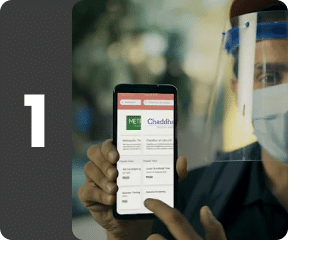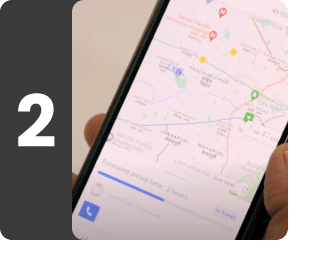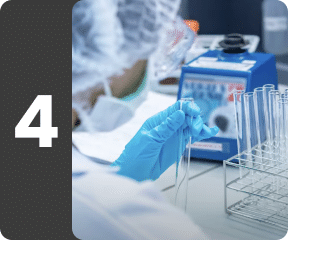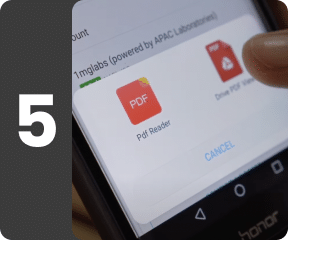PPBS (Postprandial Blood Sugar)
Understanding PPBS (Postprandial Blood Sugar)
What is PPBS (Postprandial Blood Sugar)?
The PPBS (Postprandial Blood Sugar) test measures the blood glucose (sugar) level after a meal, typically two hours after starting a meal. This test helps assess the risk of diabetes and check the effectiveness of the ongoing medication. It is often done as part of routine health checkups and when one experiences symptoms of altered blood sugar levels.
Glucose is the primary energy source for the body, and it is derived from the breakdown of carbohydrates in the food we consume. After the breakdown, glucose is absorbed into the blood and transported to the body's cells for energy. The blood glucose level is regulated by insulin, a hormone the pancreas produces. High blood glucose levels can result from a lack of insulin or its reduced effectiveness and can be a sign of diabetes or prediabetes (a condition where a person has high blood glucose levels but not yet at a level that qualifies as diabetes).
The PPBS (Postprandial Blood Sugar) test helps screen for prediabetes and diabetes and also checks the effectiveness of medications or lifestyle changes in people diagnosed with diabetes. Early detection and treatment of diabetes are important to prevent complications such as heart disease, kidney damage, and nerve damage. The PPBS (Postprandial Blood Sugar) test is typically done two hours after the start of a meal. Eating a standard meal that is not high in sugar or carbohydrates is important before the test. It is also important to inform the doctor about any medications being taken, as some may affect blood glucose levels and need to be adjusted before the test.
Test result ranges are approximate and may differ slightly between labs depending on the methodology and laboratory guidelines. Talk to the doctor about the specific test results. The results will help the doctor determine the medical condition, make recommendations for lifestyle modifications such as diet and exercise, decide whether or not medication will be required to manage the condition, and formulate an overall treatment plan.
Lifestyle Tips to Manage Your Blood Glucose Levels:
🥤Hydration: Stay hydrated! Drinking enough water supports overall health and helps maintain stable blood sugar levels.
🥙 Eat (Diet): Focus on a balanced diet rich in fiber, lean proteins, and healthy fats. Include whole grains, vegetables, nuts, and seeds to help manage blood sugar.
🚴♀️Activity (Exercise): Regular physical activity like walking, cycling, or strength training can help manage a healthy body weight and lower elevated FBS levels.
😴Lifestyle (Sleep): Get enough quality sleep to help regulate blood sugar levels.
👨⚕️Talk to Your Doctor (Consult): Regularly consult your doctor to understand your HbA1c results and adjust your diabetes management plan if needed.
💊Habits (Supplements): Consider supplements like magnesium, chromium, etc. (if advised by your doctor) to support healthy blood sugar levels.
What is PPBS (Postprandial Blood Sugar) used for?
The PPBS (Postprandial Blood Sugar) test is done:
A. As General Screening (American Diabetes Association (ADA) Recommendations, 2025)
- All adults ≽ 35 years
- Under 35 with risk factors -
- Overweight/obesity
- Family history of diabetes
- High blood pressure (BP), cholesterol, and heart disease
- Sedentary lifestyle
- History of gestational diabetes or polycystic ovary syndrome (PCOS)
B. If You Have Symptoms
- Frequent thirst, urination, or extreme hunger
- Unexplained weight loss, fatigue, or blurred vision
- Slow-healing wounds or frequent infections
C. High-Risk Groups (Monitoring)
- Prediabetes (PPBS 140 and 199 mg/dL) - Test every 1–2 years
- Diabetes (PPBS≥ 200 mg/dL) - Test every 3-6 months for management
- Women with gestational diabetes mellitus (GDM)- Test every 3 years
What does PPBS (Postprandial Blood Sugar) measure?
The PPBS (Postprandial Blood Sugar) test measures glucose levels in the blood two hours after a meal and is often performed with a fasting blood glucose test. This test measures how well your body can handle glucose after eating. It helps diagnose and monitor type 1 diabetes, caused by little or no insulin production, and type 2 diabetes, caused by insulin resistance or decreased insulin production. High postprandial blood sugar (PPBS) levels can indicate early insulin resistance, making your body less responsive to insulin.
Interpreting PPBS (Postprandial Blood Sugar) results
Interpretations
-
Normal: under 140 mg/dl (7.8 mmol/l)
-
Impaired glucose tolerance or Pre-diabetes: between 140 and 200 mg/dl (7.8 and 11.1 mmol/l)
-
Diabetes: equal to or above 200 mg/dl (11.1 mmol/l)
An oral glucose tolerance test is usually recommended when the blood glucose level falls between 140 and 200 mg/dl.
Answers to Patient Concerns & Frequently Asked Questions (FAQs) about PPBS (Postprandial Blood Sugar)
Frequently Asked Questions about PPBS (Postprandial Blood Sugar)
Q. What is the full form of PPBS?
Q. What is the purpose of the PPBS (Postprandial Blood Sugar) test?
Q. What are the normal range of the PPBS (Postprandial Blood Sugar) test?
Q. What factors can affect the results of the PPBS test?
Q. How is the PPBS (Postprandial Blood Sugar) test different from a fasting blood glucose test?
Q. Are there any preparations or precautions required before the postprandial blood glucose (PPBG) test?
Q. What should I eat before the postprandial blood glucose (PPBG) test?
Q. Why is it important to give a sample two hours after a meal for the postprandial blood glucose (PPBG) test?
Q. Can my sugar PP be higher than my sugar fasting result?
Q. What are the risk factors for diabetes?
Q. What are the common complications of diabetes?
Q. What is hypoglycemia, and what are its symptoms?
Q. What is hyperglycemia, and what are its symptoms?
Q. What other tests can be prescribed by your doctor in case the result of the blood glucose PP test is not normal?
Q. What does “postprandial” mean?
Q. What is considered a healthy PP blood sugar level?
Q. What are the 4 top tests for diabetes?
Q. What is the price of the PPBS (Postprandial Blood Sugar) test?
Book a PPBS (Postprandial Blood Sugar) test at home near me





Other tests









